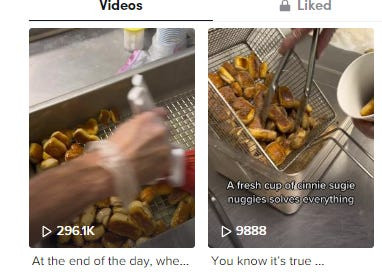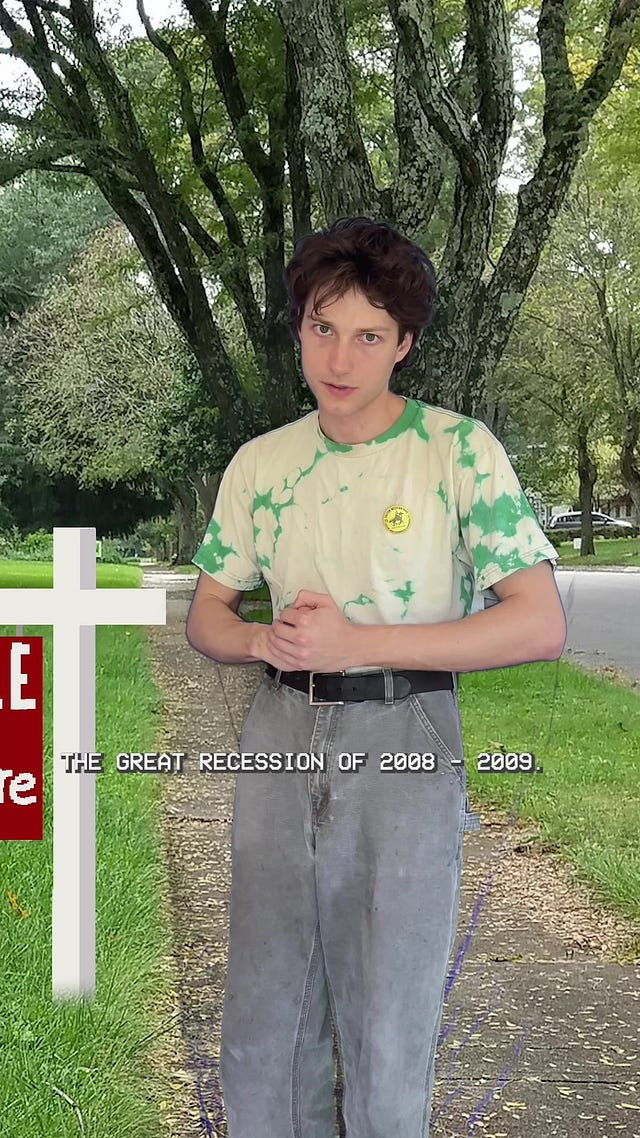Let’s confront some uncomfortable truths head-on.
- The vast majority of brands are operating in a legal grey area, if not outright illegally, when they incorporate trending songs and sounds into their TikTok and Instagram content.
- Just because your brand account can access and utilize a particular song or audio clip within the platform’s interface, it does not automatically grant you the legal right to do so for commercial purposes.
- Your brand’s approach to leveraging trending audio will ultimately hinge on the level of risk tolerance determined by your legal department.
- Major platforms like TikTok and Instagram, while fully aware of the legal complexities, often implicitly encourage brands to jump on trends, creating a confusing landscape.
- Brands are already facing legal repercussions, with lawsuits being filed for unauthorized use of trending songs and audio, particularly in paid advertising and boosted posts.
- And here’s the most challenging truth: content featuring trending audio often achieves significantly higher engagement and performance compared to videos that forgo popular sounds.
It feels like stating the unspoken reality aloud, doesn’t it?
This article will delve into crucial considerations for brands navigating the world of short-form video and trending audio. It’s important to preface this by stating that I am not a legal professional, and this information should not be construed as legal advice. With that disclaimer, let’s explore this complex issue.
Defining Your Brand’s Risk Appetite Regarding TikTok Trending Sounds
It’s common to see social media professionals questioning how certain brands are seemingly freely using popular songs on TikTok. The usual explanation boils down to their legal team’s relaxed stance or lack of awareness. However, given that employing trending audio isn’t a strategy you should be concealing (especially considering the “Music Usage Confirmation” agreement you implicitly accept with each post), initiating a discussion with your manager, CEO, or legal department is crucial. Clearly outline the potential risks and rewards associated with utilizing these trending sounds.
[Kassie Epstein 🏟 @kassieepstein
Social media manager humorously seeking legal approvals for music usage on social media platforms, highlighting the complexities brands face with Tiktok Trending Songs.
I am a: ⚪️ man ⚪️ woman 🔘 social media manager looking for: ⚪️ money ⚪️ fame 🔘 whatever approvals empire state building has to be able to post the music they use1:12 AM ∙ Jan 31, 2023636Likes21Retweets
One anonymous social media manager shared that in 2021-2022, their brand utilized sounds without securing proper permissions. It was the legal department that subsequently clarified the lack of rights to the audio they had been using.
Another social media manager explained their strategy of using “original audio” – popular talking sounds like “you’re coming home with me” or “nobody’s gonna know” – while avoiding audio incorporating samples or remixes of well-known songs from established artists. The rationale is that legal action from a viral audio creator is less probable compared to lawsuits from music studios or prominent artists.
Current information suggests that lawsuits against brands have primarily targeted the use of popular music in advertisements or boosted content. Outside of these instances, consequences have mostly been limited to audio removal or cease and desist notices.
Ultimately, your brand’s comfort level with these risks, especially concerning the use of tiktok trending songs, needs to be dictated by your legal counsel.
Proactively Seeking Permission for TikTok Sounds
A common misconception is that being barred from using trending audio by your legal team leaves you without options. This isn’t entirely accurate. If a popular “original audio” can be clearly attributed to its creator, direct outreach for permission is a viable path. A social media manager anonymously stated, “With brands facing lawsuits over sound rights, obtaining permission from original sound creators has become essential. We follow UGC permission protocols: commenting on the original video to request usage rights and requiring an affirmative response from the creator.”
If your brand is set on using a specific sound, especially a tiktok trending song, proactively seeking permission is a recommended approach.
[Bari Rosenstein @basicallybari
A social media manager contrasts video views using trending audio with permission versus commercial library audio, highlighting the dilemma of tiktok trending songs and brand visibility.
http://payoffsong.com/wp-content/uploads/2025/02/https3a2f2fpbssubstackcom2fmedia2ffnkid7cauaenl8t.jpg(https://twitter.com/basicallybari/status/1617533961038618632)[2:45 PM ∙ Jan 23, 2023200Likes5Retweets](https://twitter.com/basicallybari/status/1617533961038618632)
Debunking the “Access Equals Legal Right” Myth on TikTok
Having a business profile on Instagram and TikTok restricts access to the full music library (excluding trending hits from major artists). However, it grants access to almost all “original sounds.” Many social media managers mistakenly believe that this access, coupled with “crediting” the sound, equates to legal permission, especially when considering tiktok trending songs. This assumption is false, particularly for ads or boosted posts. Unless audio is royalty-free or brand-owned, legal permission is technically absent.
Some brands are even avoiding business profile conversion to retain access to the full music library – specifically to use popular songs. An anonymous social media manager admitted, “We’ve opted against a business account on TikTok to utilize trending sounds…” This strategy carries significant risk and demands thorough discussion with your legal team. It’s a rapid path to potential lawsuits from artists or music labels.
Remember, corporate protection in legal scenarios is not guaranteed, and personal liability remains a concern.
[Social Savannah @social_savannah
A social media expert questions brands’ risky use of popular songs in ads, emphasizing the legal and financial dangers associated with unauthorized tiktok trending songs in commercial content.
Why do brands take the risk of using popular songs in their ads? Do they not realize this is highly illegal and very risky? I’m sure Drake is not getting a “cut” of this. I see brands do this all the time, especially on TikTok. I would never take that risk. Why would you? 7:52 PM ∙ Jul 11, 202283Likes4Retweets
Platform Accountability: Enhancing Brand Support for TikTok Audio Licensing
TikTok and Instagram have a crucial role in assisting brands with navigating trending audio legally. Two key improvements stand out:
Firstly, platforms should enable creators of viral original audio (spoken word or unique sounds) to monetize their creations. Simultaneously, they should facilitate a system for brands to directly pay for the right to use this audio. Imagine a built-in marketplace within the app, compensating creators for viral audio and providing brands with legal access to participate in trends. Consider this interview with Mikhaela Jennings, the creator of “the girls that get it, get it” trend, which offers valuable context.
Secondly, the “Commercial Sounds” library needs substantial improvement. The current selection often feels repetitive and lacks the appeal of trending audio. Platforms should invest in commissioning royalty-free original sounds tailored for brands. Collaborating with creators to bring trending audios into the commercial library and partnering with brands to promote these sounds could be transformative.
Currently, platforms maintain a level of ambiguity regarding legalities surrounding tiktok trending songs because these sounds drive engagement, and a comprehensive solution is lacking. Implementing these suggestions would greatly benefit brands and foster continued investment in short-form video marketing.
Shifting Towards Trend-Agnostic Content Strategies on TikTok
The lawsuits targeting brands for using trending songs in ads are likely just the beginning. Brands using trending audio in organic social content may also face future legal challenges. For brands managing TikTok or Reels strategies, transitioning towards content strategies less reliant on trends is prudent.
Inspiration can be drawn from accounts that minimize trending audio usage, such as Planet Money, Chipotle, and Spikeball. Creators like @richcaroline, @bomanizer, and @lyssielooloo demonstrate how to create engaging content without relying on trending sounds.
Planet Money TikTok example, illustrating brand content creation without relying on tiktok trending songs, focusing on educational and engaging narratives.
[Tiktok failed to load.Enable 3rd party cookies or use another browser
Strategically, reducing reliance on trends enables brands to cultivate a more distinctive voice online. While trending content offers rapid growth, long-term brand building necessitates a unique and memorable online presence. Achieving this distinctiveness is unlikely by simply mirroring the thousands of brands using the same trending audio.
Job board advertisement showcasing social media job opportunities, indirectly related to the challenges and strategies discussed for managing tiktok trending songs in brand content.
Explore job opportunities at Pop Up Grocer, Parade, Crooked Media, LACMA, and more on the job board here! Companies seeking to post job openings and access a talent pool of social media professionals can find more information here!



